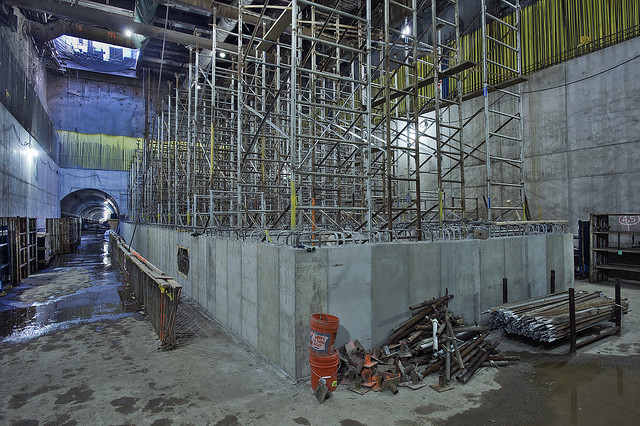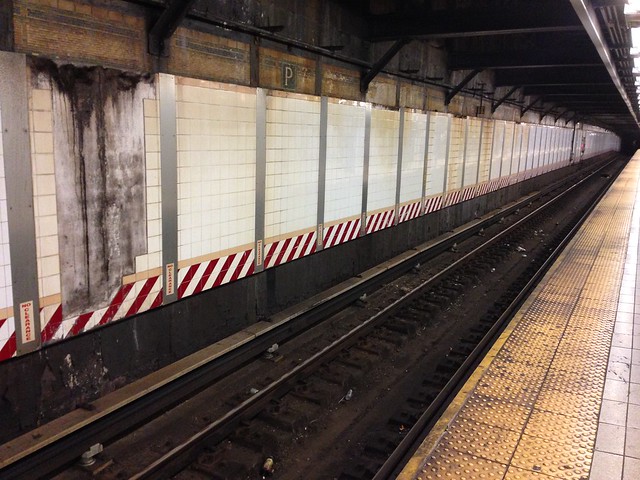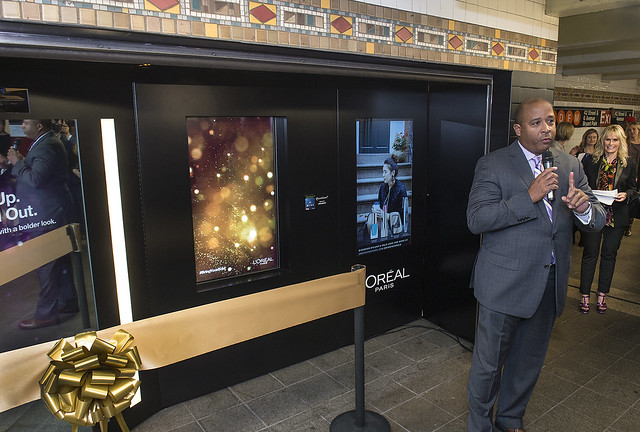 It’s going to take some time to get used to the idea of Mayor Bill de Blasio. It’s the first time New York City has had a new chief executive since 2001, and times, for better or worse, sure have changed. In a sense, with Michael Bloomberg on the way out, de Blasio will have a clean slate, but that doesn’t mean he can’t learn from and adopt the good ideas of his predecessor. Particularly in the transit and transportation realms, de Blasio would be wise to take a page from the Bloomberg playbook.
It’s going to take some time to get used to the idea of Mayor Bill de Blasio. It’s the first time New York City has had a new chief executive since 2001, and times, for better or worse, sure have changed. In a sense, with Michael Bloomberg on the way out, de Blasio will have a clean slate, but that doesn’t mean he can’t learn from and adopt the good ideas of his predecessor. Particularly in the transit and transportation realms, de Blasio would be wise to take a page from the Bloomberg playbook.
As de Blasio and his family celebrate the night away a few blocks away from my apartment, I’d like to offer up a list of suggestions for New York City’s 109th mayor. These aren’t exhaustive or exclusive ideas, but they are paths de Blasio should take if he wants to improve access for everyone in New York City — a key part of the campaign rhetoric that landed him in Gracie Mansion.
1. Invest in transit; pay attention to the MTA
Over the final years of his reign, Mayor Bloomberg seemed content to punt on the MTA. He got into a name-calling fight with then-MTA Chair Joe Lhota in the aftermath of Sandy and seemed out of the loop when it came to the MTA’s recovery efforts. But he wasn’t a disinterested bystander during the majority of his tenure. He ushered in the 7 line extension, fought hard for congestion pricing and has led, via his DOT appointees, an effort, albeit a slow one, to bring Select Bus Service to the city.
De Blasio should pick up the mayor’s zeal for transit and push forward on it. He shouldn’t necessarily fight for city control of the MTA, but he shouldn’t ignore transit. His board appointees can be strong advocates for the city, and de Blasio himself can fight for transit investments and expansion projects by putting the city’s money on the line. The subway is New York City’s, and its mayor can lead the charge to make sure the subways are better tomorrow than they are today.
2. Keep SBS but bring on real Bus Rapid Transit
New York’s approach to bus rapid transit is this half-hearted thing called Select Bus Service which is a bunch of basic operational upgrades disguised as something better. While other U.S. cities implement dedicated lanes, signal prioritization and various other hallmarks of bus rapid transit, we get pre-boarding fare payments, painted lanes with lax enforcement and no flashing lights because some Staten Islanders threw a fit. De Blasio has the opportunity to reshape the streets, and his Department of Transportation should take a good long look at a real BRT network instead of today’s Select Bus Service.
3. Keep — and expand — the borough taxi program
A few days ago, Dana Rubinstein wrote a comprehensive piece on de Blasio’s close ties to the taxi industry, and it’s one that should raise some eyebrows. In it, our future mayor expresses skepticism over the green borough taxi program, and Rubinstein draws connections to his close association with the upper echelons of the cab industry. In a Jill Colvin piece, de Blasio said, “If we’re going to make any changes to it, we better damn well make sure we don’t disrupt that which works now.”
We could debate for hours whether or not the current taxi system “works,” but the borough cabs should remain and expand. They’ve been quite popular in areas where yellow cabs are scarce or non-existent, and they calm the need to rely on private cars while generating revenue — in the form of medallion sales and metered fees — for the city. It’s a win-win for everyone but medallion owners, and they don’t need the help from Gracie Mansion.
4. Expand bike lanes, safe streets and pedestrian plazas
One of Mayor Bloomberg’s and Janette Sadik-Khan’s signature moves have been the popular pedestrian plazas, an expanded bike lane network and safe streets initiatives. A vocal minority have objected to some of these efforts on spurious grounds, and the truth remains that they make our city’s streets safer while encouraging local business. Times Square’s pedestrian makeover, for instance, has led to record-high rents in the area, and plazas in Jackson Heights and Fort Greene have been popular with residents and business alike. Meanwhile, though, children — and all New Yorkers — continue to suffer injury and death at the hands of reckless drivers.
Nearly two weeks ago, de Blasio raised a few eyebrows when he apparently waffled on street safety, but this is an issue that requires strong leadership. The new mayor should come out in favor of continuing measures that save lives while making the city more pleasant for pedestrians, those who drive the economy and make New York the vibrant urban area it is. From Day One, he can set the tone with his DOT Commissioner, and all eyes will be on him to keep making progress.
5. Solve the Penn Station Problem
I’ve written extensively on Penn Station lately but still have no answers. Madison Square Garden remains an obstacle; inter-agency cooperation remains an obstacles; costs remain an obstacle. Mayor de Blasio is uniquely positioned to lead an effort to come up with a master plan for Penn Station while encouraging the various interests to work together. It could be his lasting contribution to New York City but will take a considerable about of work, effort and leadership to see through.
Honorable Mentions: Expand CitiBike, consider a Red Hook/waterfront light rail system, pay some attention to Vision 42, ponder the 7 line to Secaucus, Phase 2 of the Second Ave. Subway.








 (Nights)
(Nights)



 (Rockaway Park Shuttle)
(Rockaway Park Shuttle)
 For some reason or another, we just can’t quit the Massimo Vignelli subway map. There’s something about it’s geographical distortions, clean lines and neat angles that make it an alluring piece of nostalgia. Perhaps the fact that it is in MoMA while the subways from the same era were covered in graffiti and generally unsafe lends it this aura of being of another time but also out of time when it was used throughout the system. Either way, it’s been 34 years since the MTA ditched it, but it’s still a part of any discussion on subway maps.
For some reason or another, we just can’t quit the Massimo Vignelli subway map. There’s something about it’s geographical distortions, clean lines and neat angles that make it an alluring piece of nostalgia. Perhaps the fact that it is in MoMA while the subways from the same era were covered in graffiti and generally unsafe lends it this aura of being of another time but also out of time when it was used throughout the system. Either way, it’s been 34 years since the MTA ditched it, but it’s still a part of any discussion on subway maps. 

